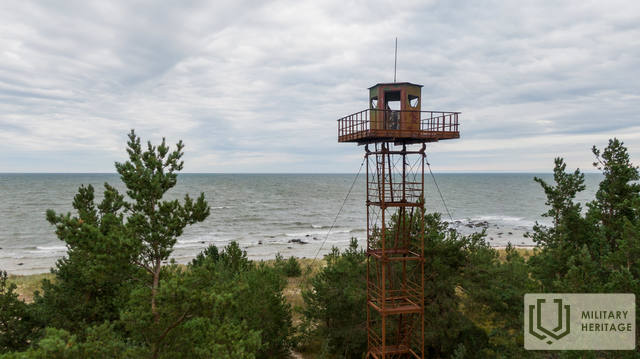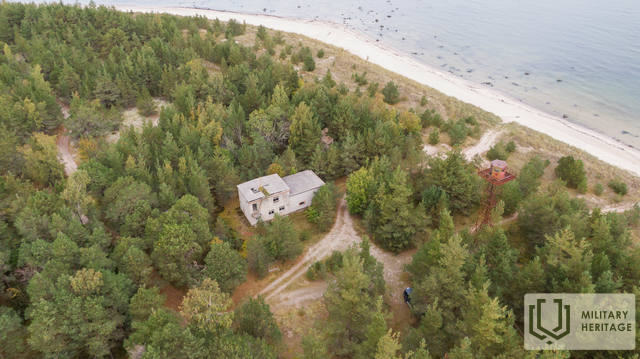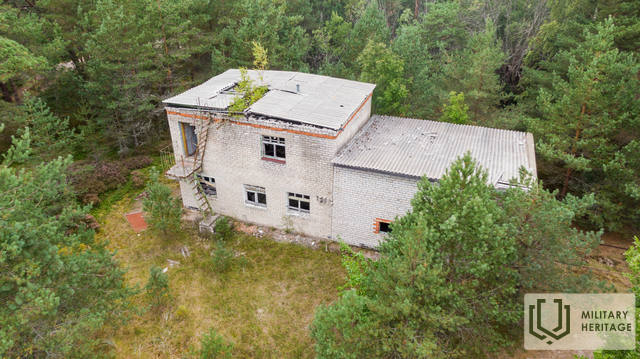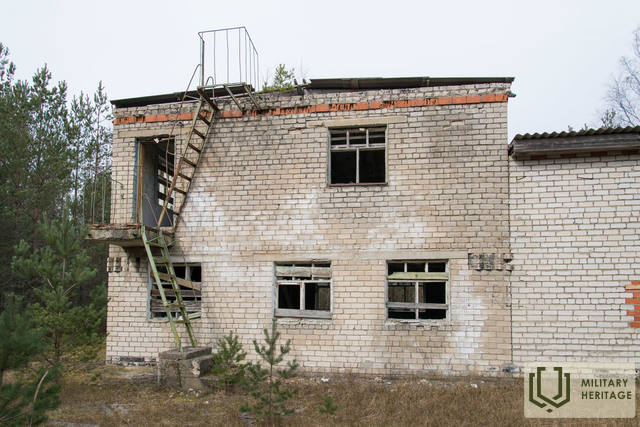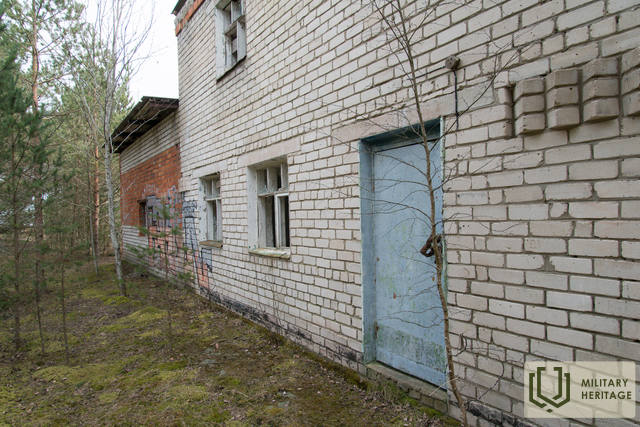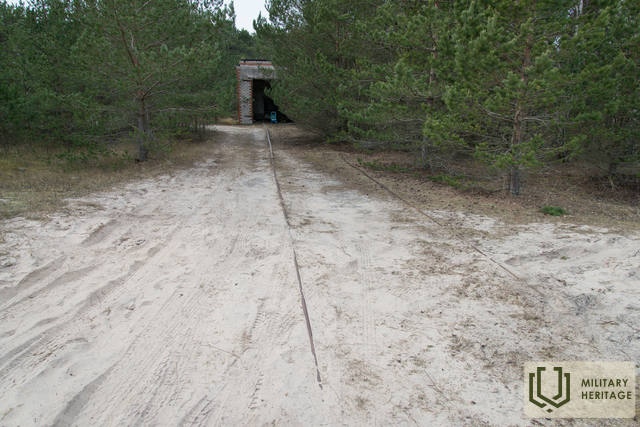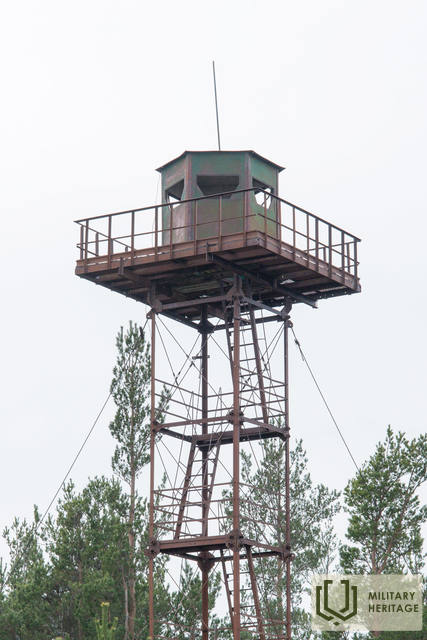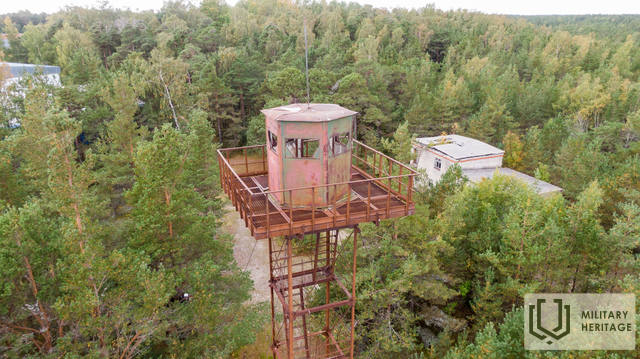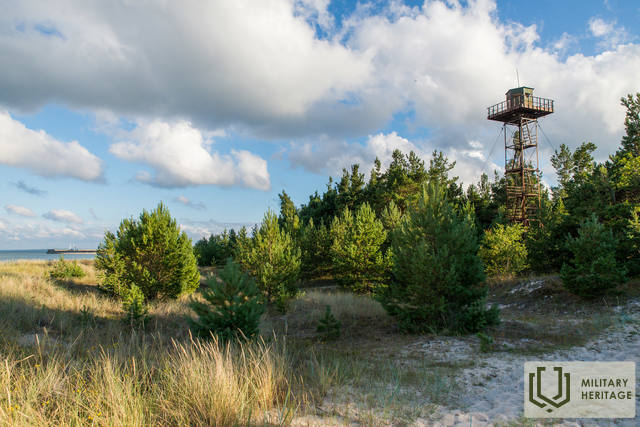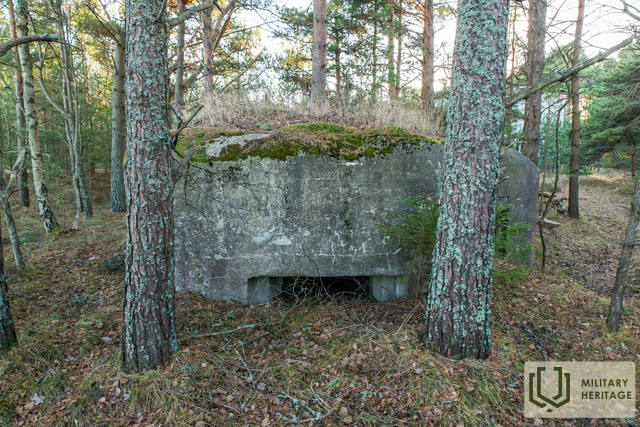Techninis stebėjimo postas Lehtmos kyšulyje
Karinė įranga

1945 m. visas Hiiumaa tapo uždara pasienio zona. Iki 1953 m. visoje saloje buvo pasienio apsaugos postai, vėliau prie vidaus jūros (tarp Sõru ir Heltermaa) punktų nebeliko. 1950 m. Hiiumaa buvo dvi komendanto būstinės (Kärdla ir Putkaste), 12 stočių (Kuri, Kärdla, Lehtma, Mudaste, Otste, Luidja, Kõpu, Kalana, Õngu, Haldi, Emmaste, Putkaste) ir Heltermaa kontrolės punktas. 1955 m. pakrantėje nuo Helamos iki Tilgos kaimo buvo skirta 12 metrų pločio zona pasienio statiniams (pasienio juostai) statyti.
Kelionė į Hiiumaa vyko per pasienio kontrolės punktus Heltermaa uoste ir Putkastės aerodrome, nuo 1964 m. Kerdlos aerodrome.
Kärdlos komendantūros štabas turėjo lauko mokymo centrą su šaudykla Paopėje. Stotyse buvo mokymo laukai, šaudyklos ir sraigtasparnių aikštelės.
Iki aštuntojo dešimtmečio Hijumaa pakrantėje buvo suartos pasienio juostos su vielinėmis tvoromis, jų liekanų vis dar galima pamatyti Tahkunos ir Kõpu pusiasaliuose. Prie medžių dažnai buvo pritvirtinta spygliuota viela. Devintajame dešimtmetyje Mägipe pakrantėje buvo išbandyta seismografinė signalizacijos sistema, reaguojanti į žmogaus žingsnius, tačiau audringoje pakrantėje ji pasirodė esanti neefektyvi. Pakrantėje tarp Tahkunos ir Lehtmos yra daugybė silikatinių plytų ginklų duobių. Visa pasienio zona palei pakrantę buvo padengta telefono linija. Maždaug kas septintas stulpas turėjo lizdą, pro kurį patruliai galėjo prijungti telefono ragelį ir susisiekti su stotimi. Devintajame dešimtmetyje oro linijos buvo pakeistos antžeminiais kabeliais.
Laikui bėgant, Hyjuma pakrantėje buvo daugiau nei 50 pasienio apsaugos stebėjimo bokštų. Stebėjimo bokštai anksčiau būdavo pasienio apsaugos stotyse, šalia techninių stebėjimo postų ir prožektorių stulpų. Techninių stebėjimo postus sudarė laivų radarai, prožektoriai (iki 200 cm skersmens), naktinio stebėjimo prietaisai ir žiūronai, o dažniausiai – dviejų įrenginių dyzelinė elektrinė. Prožektorių stulpai neturėjo stacionarių radarų, prožektoriai galėjo būti mobilūs. Techninių stebėjimo postų ir prožektorių stulpų skaičius Hyjuma saloje buvo ne mažesnis kaip 15. Be to, nuo devintojo dešimtmečio kiekvienoje stotyje buvo 2–6 radijo lokavimo postai – skirtingos konstrukcijos nedidelių pastatų rinkiniai, kurie buvo naudojami sienai stebėti nešiojamaisiais radarais. Stebėjimo postus juosė spygliuotos vielos tvora ir signalizacijos laidas.
Sovietų valdžios pabaigoje Hyjumas saloje buvo 5 stotys, kurios sudarė Vienuoliktojo pasienio apsaugos būrio Pirmąją komendantūros tarnybą. Šio 2133 būrio štabas ir kitos 8 stotys buvo Saremos saloje. Hyjumas stotys buvo: 1. Suursadama (apleista), 2. Kärdla (nugriauta), 3. Kõrgessaare (privati valda, ruošiamasi griauti), 4. Ojaküla (privati valda, kai kurie pastatai nugriauti), 5. Sõru (privati valda, gerai prižiūrima ir griauti neplanuojama). Kärdlos komendantūros štabe dauguma pastatų Pargi 3 gatvėje išliko, tačiau bus nugriauti, o jų vietoje pastatytas naujas socialinių paslaugų centras.
Po 1992 metų buvo nugriauti šie stebėjimo bokštai: Tahkuna, Sõru techninių stebėjimo postas (TOP), Kärdla stotis (2003), Hirmuste TOP (2010), Kalana TOP (2014).
2019 m. išliko 10 apžvalgos bokštų: Sėrės kyšulio TOP (vienintelis senovinio stiliaus bokštas), Suursadamos stotis, Lehtmos TOP (vienintelis tvirtos metalinės konstrukcijos bokštas), Tahkunos karo muziejus (dislokuojamas iš Ojakülos stoties), Kõrgessaare uostas, Ninametsos TOP, Palli TOP, Kõpu švyturio bokštas (anksčiau priklausė karinio jūrų laivyno radijo technologijų bendrovei), Haldi TOP ir Sõru stotis.




